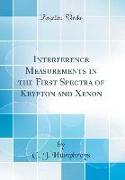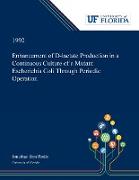- Start
- Interference Measurements in the First Spectra of Krypton and Xenon (Classic Reprint)
Interference Measurements in the First Spectra of Krypton and Xenon (Classic Reprint)
Angebote / Angebote:
Excerpt from Interference Measurements in the First Spectra of Krypton and XenonThe tubes have been operated with a G. E. Sign transformer, by connecting the Ne and Kr or Xe tubes in series to the secondary. The transformer is rated to give volts and draws a maximum primary current of 27 amp at 110 volts. To avoid overheating the tubes the primary current was reduced to about amp by introducing resistance into the primary circuit.The spectrograph employed was a Hilger E2, fitted with glass Optical parts in order that the dispersion in the red and infra-red region might be sufficient to separate the numerous lines occurring in this part of the spectrum.The interferometer plates were of glass, 40 mm in diameter, but with the aperture restricted to 28 mm by the central opening in the separators. The plates were lightly silvered by the method of cathodic deposition. When the silvered surfaces were held so as to form a thin wedge, 12 images of a 40-watt lamp could be seen through them. Re¿ecting power was deliberately sacrificed for transparency so that the effective wave lengths of as many lines as possible could be determined with reasonable exposures. The resolving power was not sufficient to detect hyperfine structure in the krypton lines, but it clearly indicated such structure for certain xenon lines, viz, and A. Invar separators of 2, 3, 15, 25, and 40 mm length were employed. The reasons for the use of several étalons will be discussed in connection with the evaluation and correction of wave lengths.About the PublisherForgotten Books publishes hundreds of thousands of rare and classic books. Find more at www.forgottenbooks.comThis book is a reproduction of an important historical work. Forgotten Books uses state-of-the-art technology to digitally reconstruct the work, preserving the original format whilst repairing imperfections present in the aged copy. In rare cases, an imperfection in the original, such as a blemish or missing page, may be replicated in our edition. We do, however, repair the vast majority of imperfections successfully, any imperfections that remain are intentionally left to preserve the state of such historical works.
Folgt in ca. 10 Arbeitstagen


